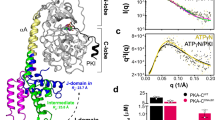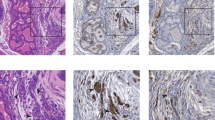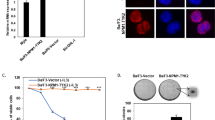Abstract
Protein kinase C-ε (PKC-ε) has been shown to increase growth and cause malignant transformation when overexpressed in NIH3T3 cells, whereas PKC-δ reduced fibroblast growth. Two reciprocal chimeric proteins (PKC-εd and PKC-δe were constructed by exchanging the regulatory and catalytic domains of PKC-δ and -ε and were stably overexpressed in NIH3T3 cells. Fibroblasts that overexpressed either chimera showed maximum cell density and morphology that were intermediate between cells overexpressing PKC-δ and those that overexpressed PKC-ε. Moreover, all lines that expressed chimeras were capable of anchorage-independent growth in the presence of TPA, which indicated that both the regulatory and catalytic domains of PKC-ε could independently induce NIH3T3 transformation, although the combination of both domains, as found in PKC-ε, was the most active form. In contrast, the translocation pattern and ability to induce tumors in nude mice was attributable to the catalytic domains exclusively. In particular, cells that expressed PKC-δe retained PKC-ε's full potency of tumorgenicity when injected into nude mice. In sum, our findings not only reinforce the concept that only certain PKC isozymes contribute to carcinogenesis but also show that different domains of PKCs mediate the physiologically distinguishable events of transformation and tumorgenesis.
This is a preview of subscription content, access via your institution
Access options
Subscribe to this journal
Receive 50 print issues and online access
$259.00 per year
only $5.18 per issue
Buy this article
- Purchase on Springer Link
- Instant access to full article PDF
Prices may be subject to local taxes which are calculated during checkout
Similar content being viewed by others
Author information
Authors and Affiliations
Rights and permissions
About this article
Cite this article
Wang, Q., Acs, P., Goodnight, J. et al. The catalytic domain of PKC-ε, in reciprocal PKC-δ and -ε chimeras, is responsible for conferring tumorgenicity to NIH3T3 cells, whereas both regulatory and catalytic domains of PKC-ε contribute to in vitro transformation. Oncogene 16, 53–60 (1998). https://doi.org/10.1038/sj.onc.1201507
Received:
Revised:
Accepted:
Published:
Issue Date:
DOI: https://doi.org/10.1038/sj.onc.1201507



